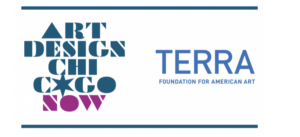Join the Hyde Park Art Center and South Side Community Art Center for a joint program in conjunction with both of our respective Faheem Majeed exhibitions: A roundtable discussion current living artists from different generations who have shown both at the Hyde Park Art Center and South Side Community Art Center during the 20th and 21st centuries.
Artists, Faheem Majeed, Juarez Hawkins, Rhonda Wheatley, Candace Hunter, Tony Smith and more will speak about working through multiple spaces, audiences, and legacies between the our two institutions, moderated by Patric McCoy. Join us for storytelling, conversation, memories, anecdotes, and insight about their work with both spaces and the historical context of working with two 80 year old institutions.
Join Zoom Meeting: https://us02web.zoom.us/j/83311142139
South Side Community Art Center “From the Center” closed March 27th
Hyde Park Art Center “Planting and Maintaining a Perennial Garden” Opens April 26
Artist Faheem Majeed creates an ambitious new installation that furthers his investigation of culturally specific institutions by focusing on the history and memory of the historic South Side Community Art Center (SSCAC). Majeed will produce a monumental charcoal rubbing of building facade of the SSCAC as the central focus of his first large-scale solo exhibition. In addition to this new fabric work Majeed will also be incorporating his ongoing series of reused wooden planks entitled Planting and Maintaining a Perennial Garden repurposed from the SSCAC’s Burroughs Gallery. For this installation the wooden planks will take the form of a platform that will both raise the massive building sized fabric rubbing on a pedestal and be host to performance and discussion.

Artists At The Center is presented as part of Art Design Chicago Now, an initiative funded by the Terra Foundation for American Art that amplifies the voices of Chicago’s diverse creatives, past and present, and explores the essential role they play in shaping the now.
Generous support for the exhibition, related public program, and catalog is provided in part by The Joyce Foundation, Terra Foundation for American Art, and the Host Committee led by Jack & Sandra Guthman, Cynthia Heusing & David Kistenbroker, and Eric & Cheryl McKissack. Contributions also provided by John Ellis, Julie Marie Lemon & Heinrich Jaeger, Cheryl & Thomas Rudbeck, and Freddye Smith.



